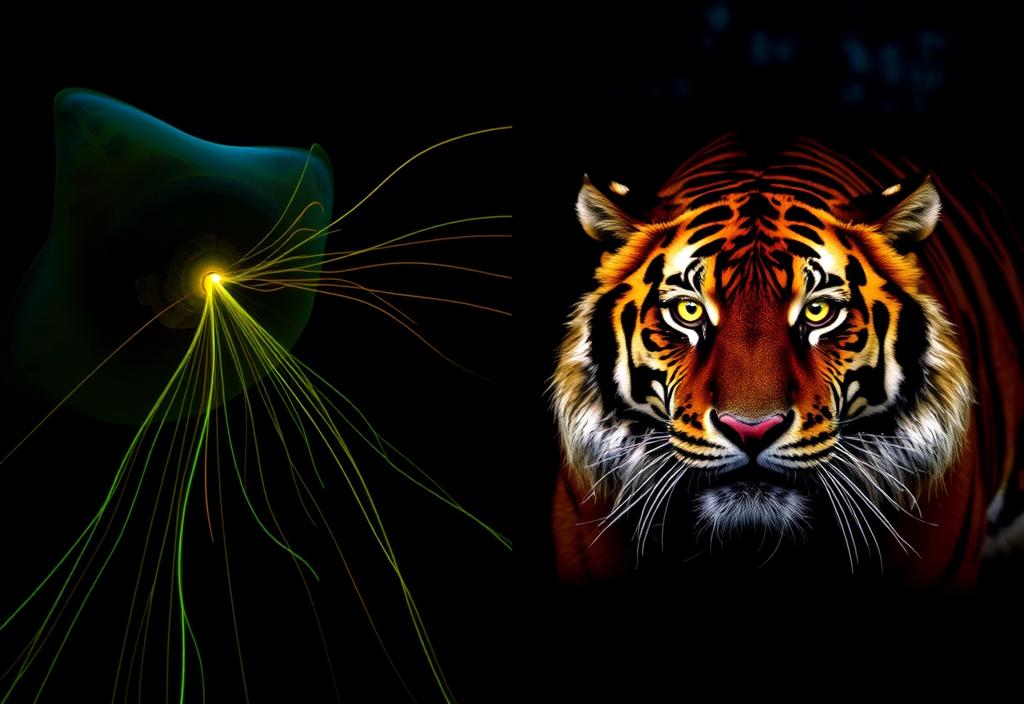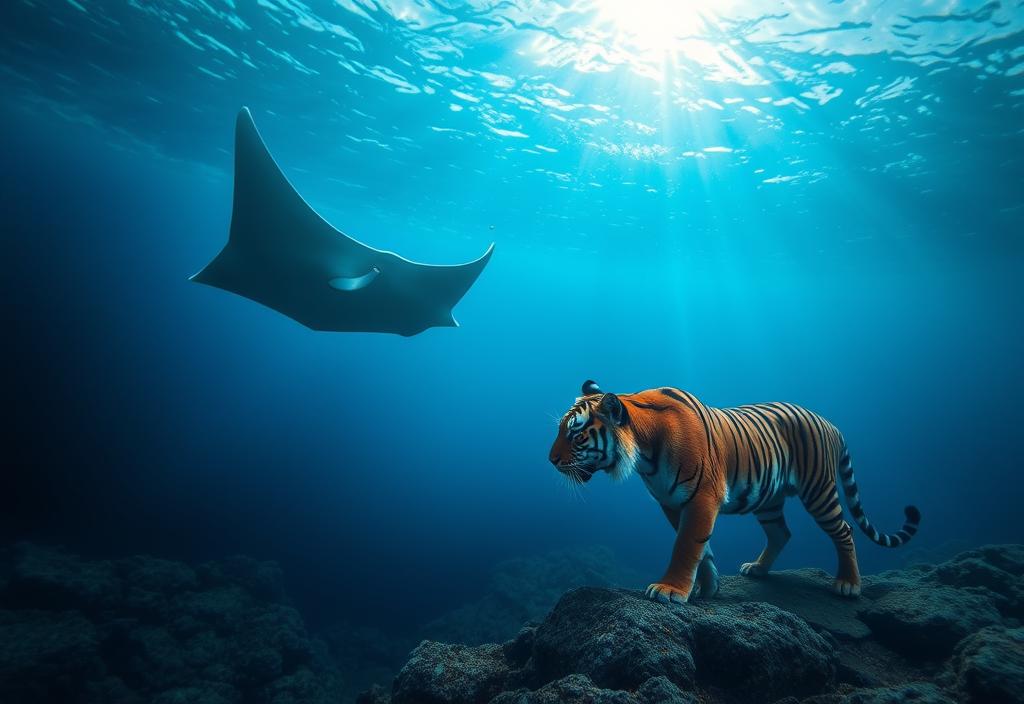In the animal kingdom, rays and tigers are two vastly different species that have captivated humans for centuries. While rays are marine animals that glide through the ocean with ease, tigers are majestic land predators that rule the forests. As we delve into the year 2024, let’s explore the top 10 key differences between these two incredible creatures.
1. Habitat and Distribution
Rays are found in oceans worldwide, from shallow coral reefs to deep-sea environments, while tigers inhabit forests and grasslands in various parts of Asia. This fundamental difference in habitat and distribution sets the stage for their distinct lifestyles and adaptations. Rays have a unique ability to thrive in diverse aquatic environments, from the warm waters of the tropics to the cold waters of the polar regions. In contrast, tigers have a more limited range and are found primarily in the tropical and subtropical regions of Asia. Their habitat and distribution are closely tied to their evolutionary history and adaptations.

2. Diet and Feeding Habits
Rays are primarily carnivores, feeding on small fish, crustaceans, and mollusks, while tigers are apex predators that feed on large ungulates, such as deer and wild boar. Their dietary differences reflect their unique adaptations to their environments. Rays have a highly efficient digestive system that allows them to extract nutrients from their food sources, while tigers have a more specialized diet that requires them to hunt and kill their prey. Their feeding habits are closely tied to their habitat and distribution, and play a crucial role in maintaining the balance of their ecosystems.

3. Reproduction and Lifespan
Rays typically reproduce by laying eggs, while tigers give birth to live young. Rays have a relatively shorter lifespan, ranging from 10 to 20 years, compared to tigers, which can live up to 15 years in the wild. However, rays have a unique reproductive strategy that allows them to produce large numbers of offspring, which helps to compensate for their shorter lifespan. In contrast, tigers have a more limited reproductive capacity, which makes them more vulnerable to population decline and extinction. Their reproductive strategies are closely tied to their habitat and distribution, and play a crucial role in maintaining the balance of their ecosystems.

4. Social Structure and Behavior
Rays are generally solitary animals, while tigers are known to be territorial and often have large home ranges. Their social structures and behaviors are shaped by their environments and adaptations. Rays have a unique ability to navigate and communicate in their aquatic environments, while tigers have a more complex social structure that is influenced by their habitat and distribution. Their behavior and social interactions are closely tied to their reproductive strategies and play a crucial role in maintaining the balance of their ecosystems.

5. Conservation Status
Both rays and tigers face threats to their populations, but tigers are listed as endangered, while many ray species are vulnerable or endangered. Conservation efforts are crucial to protect these magnificent creatures. Rays are threatened by overfishing, habitat destruction, and climate change, while tigers are threatened by habitat loss, poaching, and human-tiger conflict. Their conservation status is closely tied to their habitat and distribution, and requires a comprehensive approach that addresses the root causes of their decline.

6. Physical Characteristics
Rays have a unique body shape, with a flattened head and a long, slender tail, while tigers have a muscular build and distinctive stripes. Their physical characteristics reflect their adaptations to their environments. Rays have a highly efficient swimming ability that allows them to navigate their aquatic environments, while tigers have a powerful build that enables them to hunt and kill their prey. Their physical characteristics are closely tied to their habitat and distribution, and play a crucial role in maintaining the balance of their ecosystems.

7. Sensory Abilities
Rays have a highly developed sense of electroreception, which helps them navigate and find prey in the ocean, while tigers have exceptional night vision and hearing. Their sensory abilities are tailored to their environments. Rays have a unique ability to detect the electrical signals of their prey, while tigers have a highly developed sense of smell that helps them track their prey. Their sensory abilities are closely tied to their habitat and distribution, and play a crucial role in maintaining the balance of their ecosystems.

8. Migration Patterns
Rays are known to migrate long distances in search of food and suitable habitats, while tigers have relatively fixed home ranges. Their migration patterns reflect their adaptations to their environments. Rays have a unique ability to navigate and adapt to changing environmental conditions, while tigers have a more limited range and are influenced by their habitat and distribution. Their migration patterns are closely tied to their reproductive strategies and play a crucial role in maintaining the balance of their ecosystems.

9. Communication Methods
Rays use body language and electrical signals to communicate, while tigers rely on vocalizations and scent markings. Their communication methods are shaped by their environments and adaptations. Rays have a unique ability to communicate with each other through electrical signals, while tigers have a highly developed sense of hearing that helps them detect and respond to their prey. Their communication methods are closely tied to their habitat and distribution, and play a crucial role in maintaining the balance of their ecosystems.

10. Cultural Significance
Rays and tigers have been revered and respected by humans for centuries, featuring in various cultures and mythologies. Their cultural significance reflects their importance in the natural world. Rays have a unique ability to inspire and awe humans with their beauty and majesty, while tigers have a powerful symbolism that reflects their strength and resilience. Their cultural significance is closely tied to their habitat and distribution, and requires a comprehensive approach that addresses the root causes of their decline.

In conclusion, the differences between rays and tigers are a testament to the incredible diversity of life on Earth. By understanding and appreciating these differences, we can work towards protecting and conserving these magnificent creatures for future generations.
